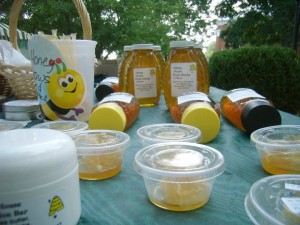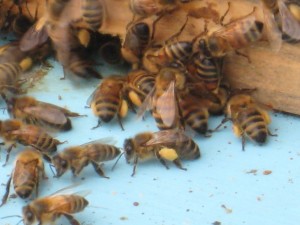Daffodils, tulips, and hyacinths – the big, colorful blossoms that we associate with spring – may not have made their annual appearance yet, but spring is gradually moving north. Beekeepers know it because their bees are carrying more and more pollen back to the hives. This activity has been going on for some time further south, and is now reaching Tennessee and Kentucky. Though not the first photos I’ve received of pollen laden bees this year, the two I’m sharing with you here are particularly nice. They were sent to me by my Tennessee friend Fred Sloop.
Click photo to enlarge – a Sloop Family photo
Lots of pollen collection not only signifies blooming in the bees’ foraging range, but also means that brood rearing is underway in earnest in the hives. Pollen consumption is integral to the rearing of new bees and, in the process, stimulates the bees to collect more pollen, which in turn ….. Hence the frenzied activity we are beginning to see.
Maybe there is a beekeeper on staff at National Public Radio, or maybe it’s something in the air. At any rate, a few days ago NPR ran a story about how the collection of pollen by bees is facilitated by a slight, negative electrical charge in flowers. As bees fly they gain a slight positive charge from friction with the air. When they visit a flower, the pollen is literally electrically attracted to the hairs on their bodies. Honey bees actively collecting pollen will work purposefully to free it from the flower, but electrostatic attraction ensures that the flower’s needs are met whether or not the bee is interested in pollen on given flight. (The NPR spot also sights a recent study at the University of Bristol which demonstrates that bumble bees, at least, can sense the flower’s electrical field and use it to guide themselves to nectar sources and to avoid those which have just been visited by another bee.)
But wait, even more remarkable things happen after the pollen is on the honey bee’s body. NPR left out the most interesting parts. The bee uses her forelegs, which have hairs Continue reading






![246654_1927054414237_3184658_n[1]](http://philcrafthivecraft.com/wp-content/uploads/2013/01/246654_1927054414237_3184658_n1-207x300.jpg)